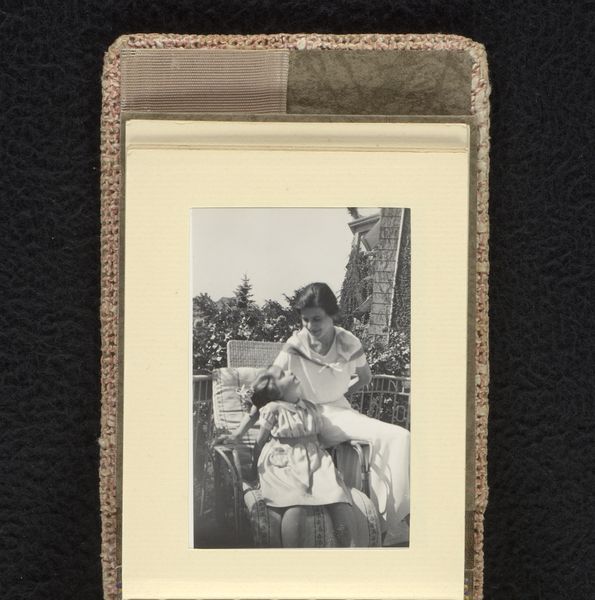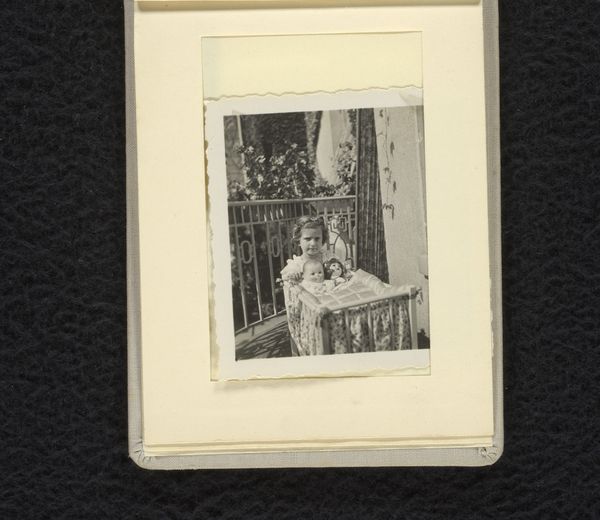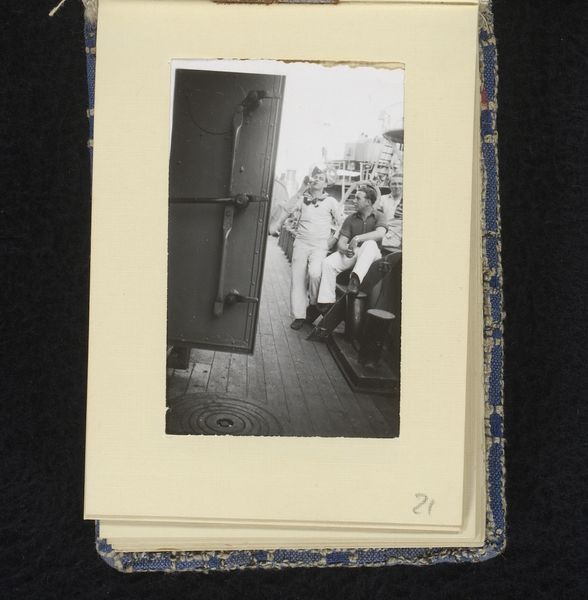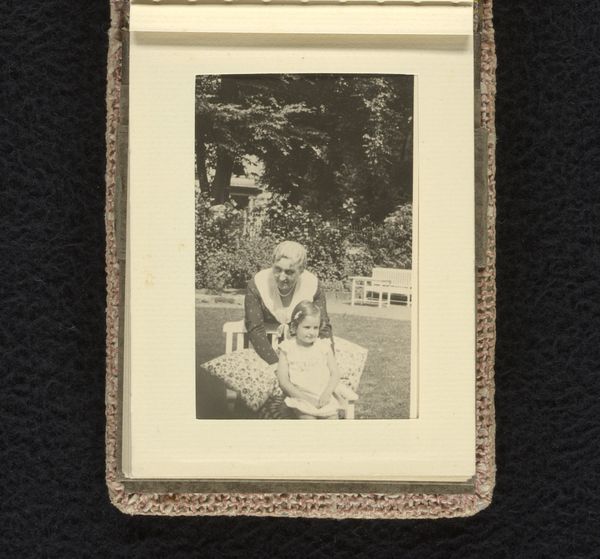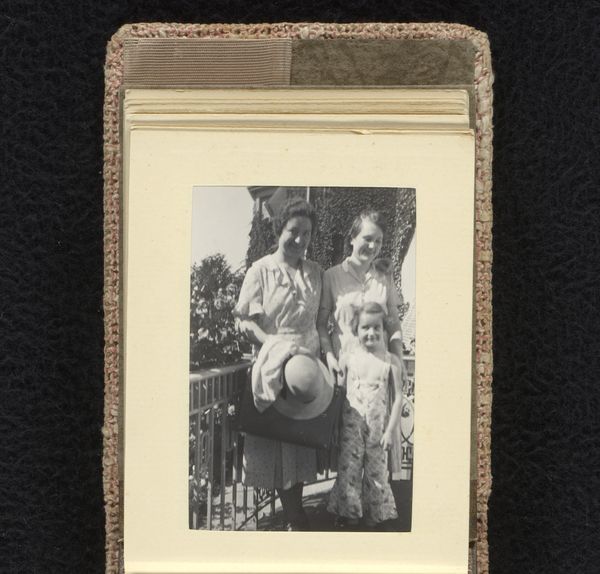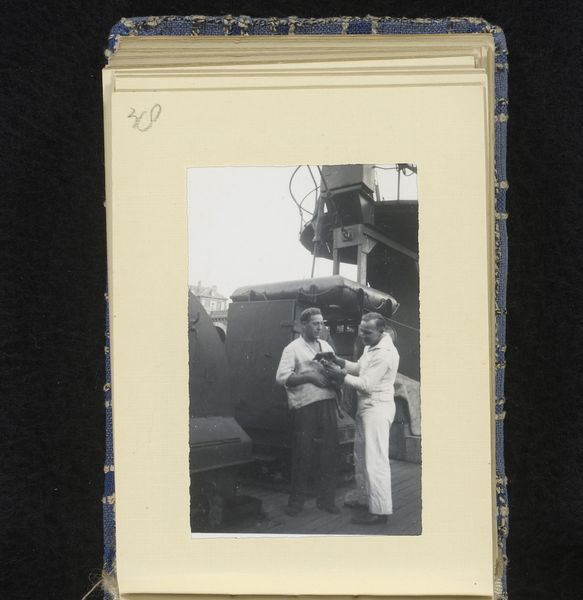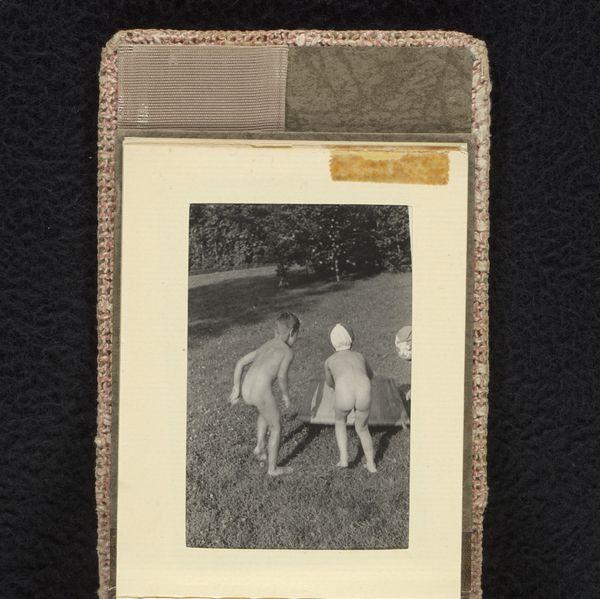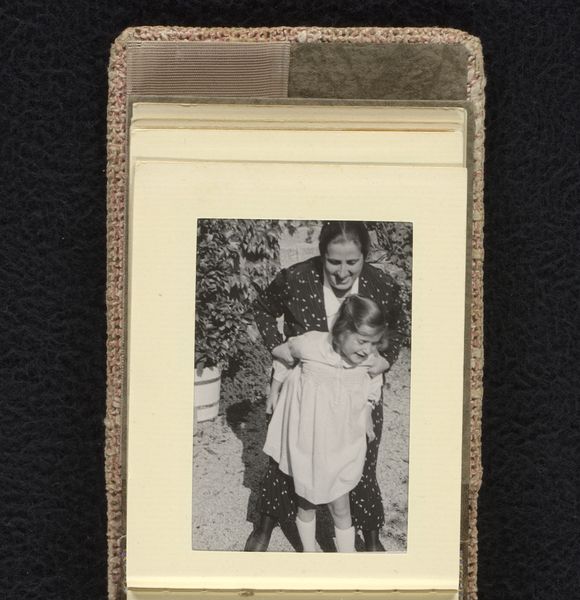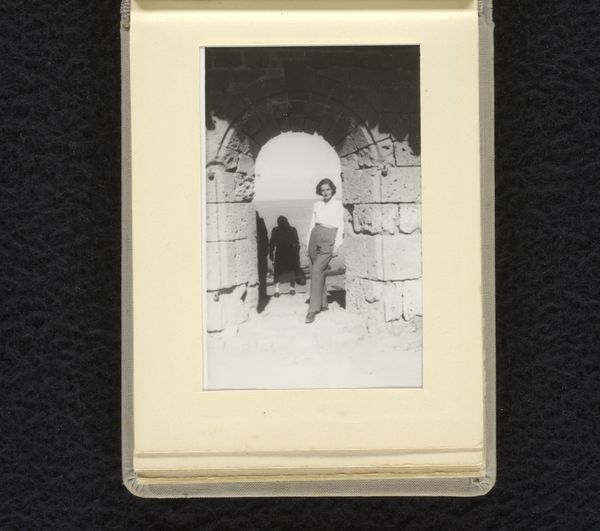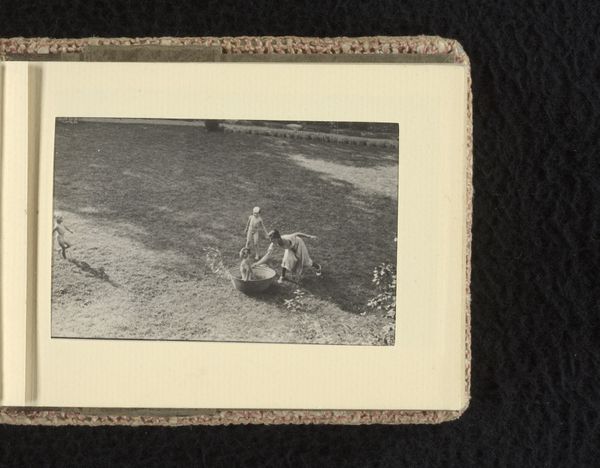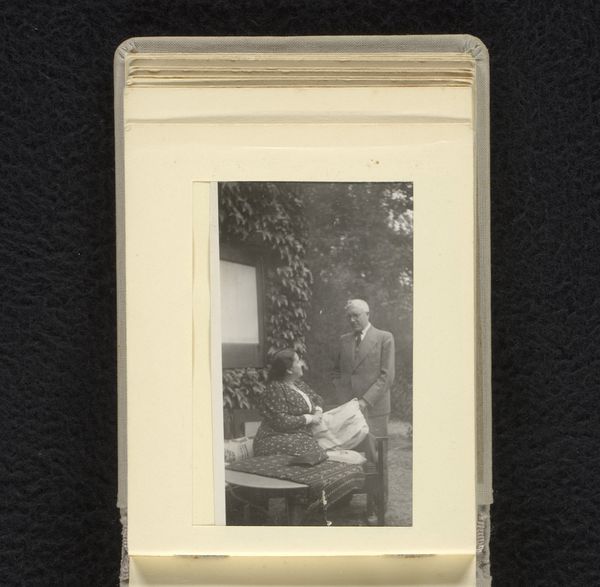
Isabel Wachenheimer op het balkon met haar kindermeisje, juni-augustus 1933, Hamburg Possibly 1933 - 1937
0:00
0:00
photography, gelatin-silver-print
#
portrait
#
landscape
#
photography
#
intimism
#
framed image
#
group-portraits
#
gelatin-silver-print
#
modernism
Dimensions: height 65 mm, width 92 mm, height 80 mm, width 106 mm
Copyright: Rijks Museum: Open Domain
Editor: Here we have "Isabel Wachenheimer op het balkon met haar kindermeisje, juni-augustus 1933, Hamburg," a gelatin silver print from possibly between 1933 and 1937. The image has such a peaceful, domestic quality, like a glimpse into a private world. How does its historical context affect your reading of this work? Curator: This photograph's existence and preservation offer a poignant window into a family's life amidst rising anti-Semitism in 1930s Germany. It’s a study in contrast. On the one hand, it depicts everyday life, the bourgeois comfort of a balcony scene; a mother with, presumably, her child’s caregiver. Yet, given the date and location, it’s impossible to ignore the impending persecution and violence that would soon engulf this family and countless others. Editor: So, the seemingly ordinary scene gains an almost unbearable weight. Does knowing the family’s history influence how we should view the artistic choices, like the composition and framing? Curator: Absolutely. The intimacy of the scene, the focus on domesticity, feels deliberate. It can be interpreted as an attempt to hold onto normalcy, to preserve a sense of security in a world that was rapidly becoming unsafe. Consider how the framed image *within* the frame isolates the figures further. It suggests not just intimacy but also fragility, almost as though they were attempting to shield themselves from what’s outside of their personal realm. Editor: It's unsettling to see that contrast of intimacy against a wider sociopolitical tragedy. Curator: Precisely. Photographs like this, when viewed through a historical lens, become powerful testaments to resilience and quiet resistance in the face of unimaginable adversity. It makes you think about all of the lost potential within this frame. Editor: This definitely offers a different perspective of family portraits; thinking about the public role of a photograph, like this, adds complexity. Thanks for clarifying the historical aspects of the work, I hadn't fully appreciated that. Curator: It’s crucial to consider how broader social forces shape not just the production of art but its reception and enduring impact.
Comments
No comments
Be the first to comment and join the conversation on the ultimate creative platform.
